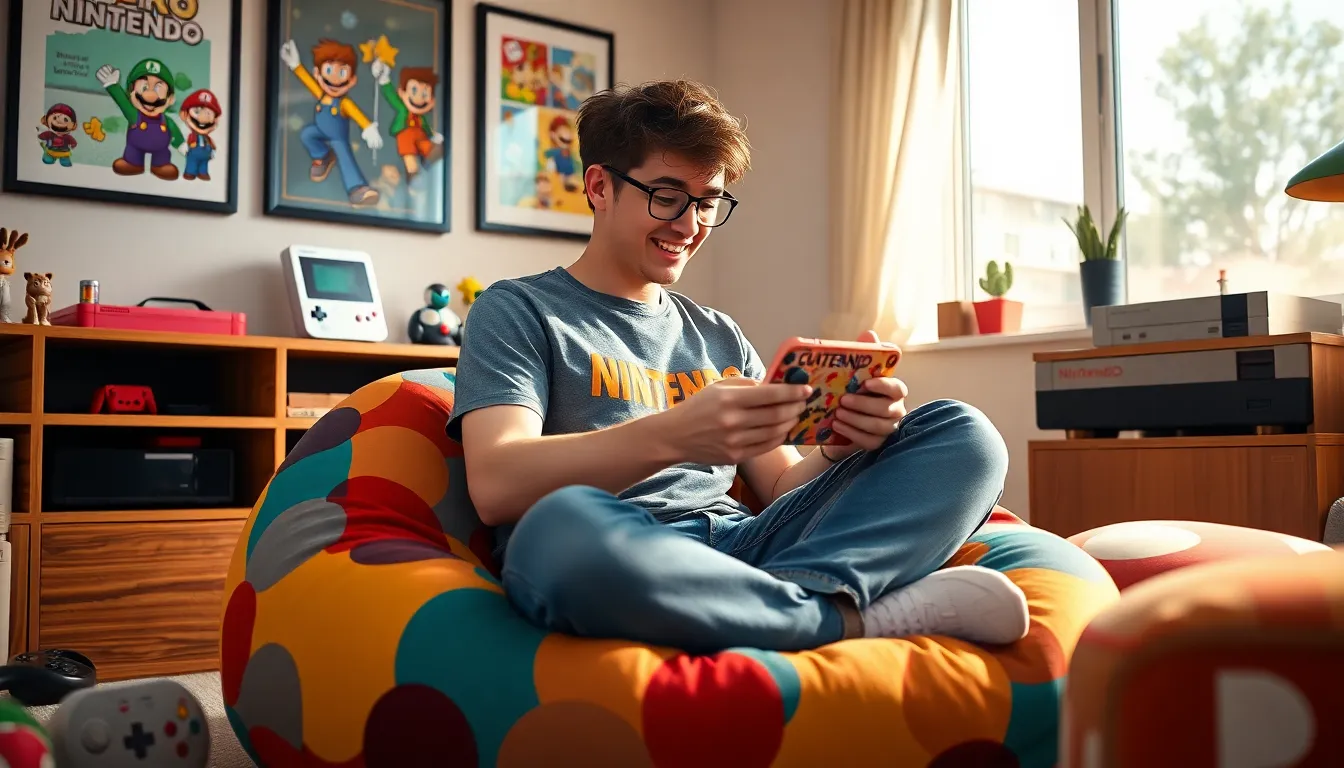Nintendo, a titan in the gaming industry, has consistently pushed the boundaries of technology, offering a rich tapestry of gadgets that have captivated gamers worldwide. From nostalgic handhelds to cutting-edge consoles, the evolution of Nintendo gadgets mirrors the advancements in gaming culture. This article explores the journey of Nintendo’s gadgets, their impact on gaming culture, and what the future holds for this beloved brand.
Table of Contents
ToggleThe Evolution of Nintendo Gadgets

Key Nintendo Consoles and Handhelds
Nintendo began its foray into the gaming world with the release of the Nintendo Entertainment System (NES) in 1985. This legendary console revived the gaming industry after the crash of the early 1980s. Its array of games and innovative controller design set a standard that many would follow.
The handheld revolution kicked off with the Game Boy in 1989, which introduced portable gaming to millions. Featuring an impressive battery life and a library of games that included classics like “Tetris” and “Pokémon,” the Game Boy created a new demographic of gamers on the go.
Fast forward to the 2000s, and the Nintendo DS reinvented how players interacted with games through dual screens and touch controls. This was followed by the Wii, which introduced motion control gaming, making it accessible to casual gamers and families. Each of these devices did not just evolve: they created experiences that defined generations of gamers.
Innovative Accessories and Peripherals
Nintendo has always been about innovation, not just in consoles but also in accessories. The introduction of the Wii Fit balance board in 2007 pushed the boundaries of gaming by integrating fitness into play, promoting a healthier lifestyle while still providing entertainment.
Also, the Nintendo Switch’s Joy-Con controllers demonstrated versatility, allowing users to play in various configurations, handheld, tabletop, or docked. This adaptability paved the way for shared experiences, encouraging social gaming like never before. From amiibo figurines that unlock in-game content to the Labo kits that blend gaming with DIY creativity, Nintendo’s commitment to innovation shapes its ecosystem in unique ways.
The Impact of Nintendo Gadgets on Gaming Culture
How Nintendo Shaped Gaming Trends
Nintendo’s gadgets have consistently influenced gaming trends. The introduction of the Wii made motion controls a household feature, inspiring competitors to integrate similar mechanics into their systems. This trend not only prioritized physical engagement in gaming but also reshaped game design to focus on accessibility and family-friendly content.
The shift towards portable gaming devices also changed how games were consumed. The advent of the Nintendo Switch blurred the lines between home and handheld gaming, catering to diverse gaming lifestyles. Such changes not only increased market share for Nintendo but reshaped consumer expectations across the entire industry.
Fan Communities and Their Influence
Fan communities around Nintendo gadgets are passionate and influential. Online forums, social media groups, and fan conventions have sprung up, allowing enthusiasts to celebrate their favorite characters and franchises. Events like Nintendo Direct unveil new gadgets and games, creating excitement and fostering a deeper connection between the company and its audience.
Also, user-generated content, such as speedruns and fan art, enriches the community experience. This symbiotic relationship between Nintendo and its fans has established a loyal customer base, often leading to longstanding nostalgia that benefits the brand’s image and sales.
Future Trends in Nintendo Gadgets
Emerging Technologies and Innovations
Looking ahead, Nintendo is expected to harness emerging technologies to enhance gaming experiences. Virtual reality (VR) and augmented reality (AR) are trends to watch, particularly after the success of titles like “Pokémon GO,” which demonstrated the potential for AR within gaming. With advancements in hardware and software, Nintendo could leverage these technologies to create immersive worlds that remain true to their whimsical aesthetic.
Also, the integration of AI could personalize gaming experiences. AI-driven characters and stories could adapt to a player’s style, creating a unique dynamic that enhances replay value. As online gaming continues to evolve, Nintendo’s focus on community and social interaction will likely remain paramount, shaping future technological advancements.
Predictions for Upcoming Releases
Speculations for new Nintendo gadgets are already stirring excitement among fans. With reports of a potential new console succeeding the Switch, many anticipate enhancements in graphics, processing power, and battery life. Besides, collaborations with other tech companies could lead to innovative peripherals that enhance gameplay.
The interest in retro gaming also presents opportunities. Nintendo could expand its Classic Mini series, bringing beloved past titles to modern consoles, appealing to nostalgia while reaching new audiences. As the gaming landscape continues to evolve, Nintendo will need to stay agile and receptive to trends that resonate with both new gamers and longtime fans.
Conclusion
To conclude, Nintendo’s legacy in gaming gadgets has not only shaped individual gaming experiences but has also significantly impacted the broader culture of gaming. By embracing innovation and community engagement, Nintendo has remained a beloved brand through the decades. The future promises further advancements and surprises, as the gaming industry evolves and consumer expectations change. Eventually, Nintendo’s commitment to creativity and fun ensures that it will continue to play a significant role in shaping the future of gaming.






